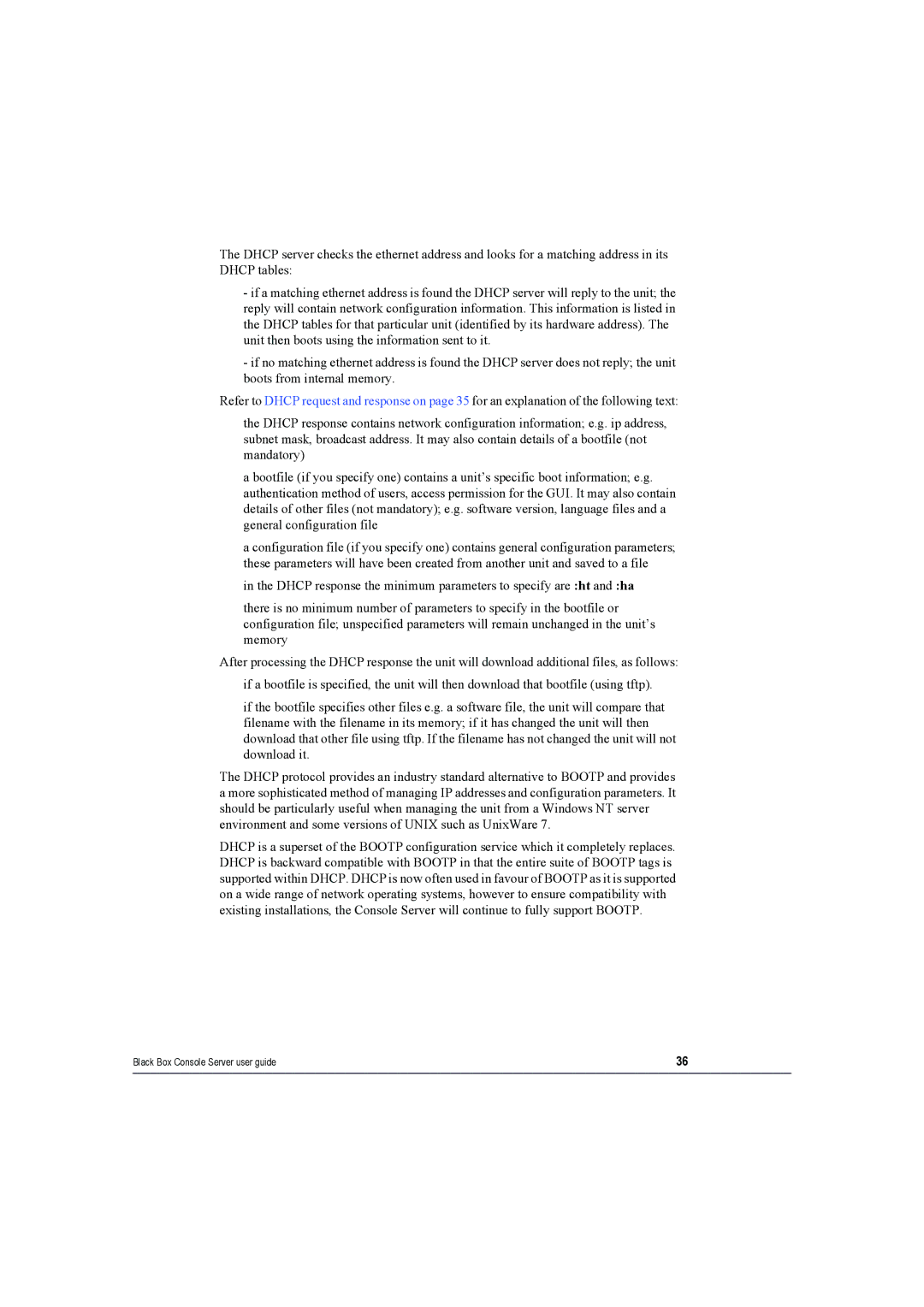The DHCP server checks the ethernet address and looks for a matching address in its DHCP tables:
-if a matching ethernet address is found the DHCP server will reply to the unit; the reply will contain network configuration information. This information is listed in the DHCP tables for that particular unit (identified by its hardware address). The unit then boots using the information sent to it.
-if no matching ethernet address is found the DHCP server does not reply; the unit boots from internal memory.
Refer to DHCP request and response on page 35 for an explanation of the following text:
the DHCP response contains network configuration information; e.g. ip address, subnet mask, broadcast address. It may also contain details of a bootfile (not mandatory)
a bootfile (if you specify one) contains a unit’s specific boot information; e.g. authentication method of users, access permission for the GUI. It may also contain details of other files (not mandatory); e.g. software version, language files and a general configuration file
a configuration file (if you specify one) contains general configuration parameters; these parameters will have been created from another unit and saved to a file
in the DHCP response the minimum parameters to specify are :ht and :ha
there is no minimum number of parameters to specify in the bootfile or configuration file; unspecified parameters will remain unchanged in the unit’s memory
After processing the DHCP response the unit will download additional files, as follows: if a bootfile is specified, the unit will then download that bootfile (using tftp).
if the bootfile specifies other files e.g. a software file, the unit will compare that filename with the filename in its memory; if it has changed the unit will then download that other file using tftp. If the filename has not changed the unit will not download it.
The DHCP protocol provides an industry standard alternative to BOOTP and provides a more sophisticated method of managing IP addresses and configuration parameters. It should be particularly useful when managing the unit from a Windows NT server environment and some versions of UNIX such as UnixWare 7.
DHCP is a superset of the BOOTP configuration service which it completely replaces. DHCP is backward compatible with BOOTP in that the entire suite of BOOTP tags is supported within DHCP. DHCP is now often used in favour of BOOTP as it is supported on a wide range of network operating systems, however to ensure compatibility with existing installations, the Console Server will continue to fully support BOOTP.
Black Box Console Server user guide | 36 |
